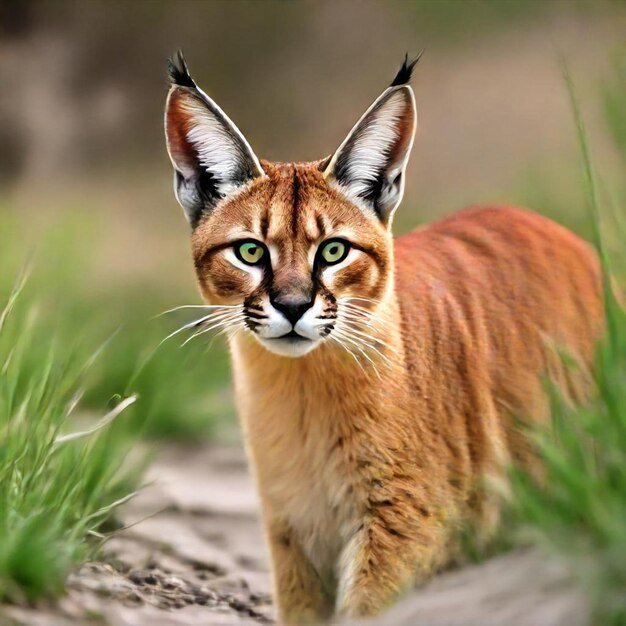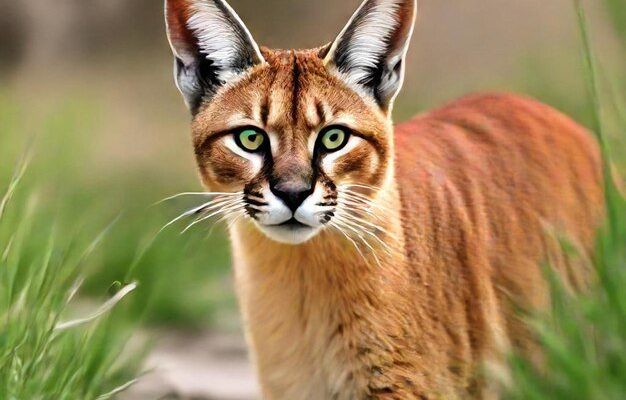
Think of a caracal as the clever cousin of your house cat. Much like how your cat exhibits quirky behaviors and problem-solving skills, the caracal showcases impressive intelligence and adaptability in the wild. In this article, we’ll dive deeper into how smart a caracal really is, exploring its cognitive abilities, behaviors, and what makes this beautiful creature tick. So, grab a coffee, and let’s get into it!
Understanding Caracal Behavior
Caracals are fascinating creatures, and understanding their behavior gives us insight into their intelligence. These cats are known for their stealthy hunting skills and adaptable nature. Living in various habitats, from savannas to forests, they’ve developed behaviors that help them thrive in diverse conditions.
One of the standout behaviors of the caracal is its hunting technique. Unlike other big cats that stalk their prey, caracals often use their incredible agility and speed for quick bursts of energy. They are known for their *leaping ability*, sometimes jumping as high as 10 feet to catch birds in mid-flight! This requires not just physical prowess but cognitive skills like timing and spatial awareness.
Caracals are also solitary animals. This means they rely on their instincts and intelligence to navigate their environment without the help of a pride or pack. They’ve developed excellent memory skills, which help them remember the locations of their territory and potential prey. This cleverness shows how smart they truly are.
Cognitive Abilities: Problem Solving and Learning
When we talk about intelligence, we often think of problem-solving skills. Caracals exhibit these skills in various ways. For example, they can adapt their hunting strategies based on the type of prey available. If a particular method isn’t working, they’ll switch it up, showing flexibility that’s a hallmark of intelligent animals.
Research also indicates that caracals possess a unique ability to learn from their environments. They can observe other animals and identify patterns that help them succeed. This type of learning is essential for survival in the wild, where conditions and prey availability can change rapidly. It’s like they’re constantly updating their “game plan” based on what they see and experience.
Interestingly, caracals can also remember previous encounters with prey. This means if they had success or failure with a particular tactic, they’ll adjust their future behavior accordingly. It’s a mental agility that reflects a high degree of intelligence.
Social Behavior and Communication
You might be surprised to learn that caracals are not just solitary beings; they also have rich social behaviors and communication. Although they typically prefer to be alone, they do interact with others during mating season or when raising kittens.
Caracals use a range of sounds to communicate with each other. This includes growls, hisses, and even purrs. Each sound serves a purpose, whether it’s to fend off rivals or attract mates. Their vocal abilities show that they have a social intelligence, capable of responding to the needs of their environment and fellow caracals.
Understanding these social dynamics gives us a sense of how intelligent they are. They can pick up on signals from their surroundings and adjust their behaviors in response. For example, when a caracal senses danger, it can silently slip away, showcasing both awareness and social knowledge.
The Role of Environment in Caracal Intelligence
The environment plays a significant role in shaping a caracal’s cognitive abilities. These cats are highly adaptable, which means they can thrive in various settings, from arid deserts to lush grasslands. Adaptability itself is a sign of intelligence, as it requires understanding one’s surroundings and adjusting behaviors accordingly.
In areas where prey is abundant, caracals might become more specialized hunters, focusing on specific types of animals. Conversely, in less favorable environments, they might diversify their diet to ensure survival. This adaptability shows their cognitive flexibility and problem-solving skills in responding to changes in their habitat.
Moreover, caracals are skilled at using their surroundings for shelter and protection. They often utilize rock crevices or dense foliage, demonstrating knowledge of their environment that aids their survival. This resourcefulness is a clear indicator of their intelligence.
Comparison to Other Wild Cats
When you think about feline intelligence, it’s natural to compare the caracal to other wild cats, like lions or leopards. While each species has its unique strengths, the caracal holds its own in the intelligence department.
For instance, lions rely heavily on social structures and teamwork, while leopards are solitary but possess remarkable adaptability. Caracals, although smaller, are incredibly agile and quick thinkers, making them effective hunters. Their hunting techniques and ability to adapt demonstrate a different kind of intelligence that’s equally impressive.
In terms of problem-solving, caracals often excel in scenarios that require stealth and quick reflexes. This contrasts with larger cats that may employ more brute strength in their hunting strategies. The cunning of a caracal showcases a form of intelligence rooted in agility and cleverness.
Conservation and the Future of Caracals
Understanding how smart caracals are is crucial for their conservation. As habitats shrink and prey becomes scarce, the adaptability of these cats will be put to the test. Protecting their environments and understanding their behaviors can help ensure their survival.
Conservation programs often aim to maintain the balance of ecosystems where caracals thrive. Preserving their natural habitats helps retain not just caracals, but the entire web of life they are part of. Intelligent species like caracals play vital roles in their ecosystems, and their loss could create ripple effects throughout their environments.
As we learn more about how smart caracals are, we can better advocate for their protection. Recognizing their cognitive abilities adds depth to our appreciation of these majestic creatures and emphasizes our responsibility to safeguard their future.
In conclusion, caracals are not just beautiful creatures; they possess a remarkable level of intelligence that rivals many other wild cats. From their agile hunting techniques to their problem-solving skills, it’s clear that these cats have evolved to thrive in their environments. Their unique blend of behaviors and cognitive abilities makes them a fascinating subject for anyone interested in wildlife.
So, the next time you hear about a caracal, remember that there’s more than meets the eye. Their intelligence reminds us of the intricate web of life in the wild and reinforces the importance of protecting these incredible animals. With every leap and bound, caracals showcase not just beauty but also the brilliance of nature’s design.

